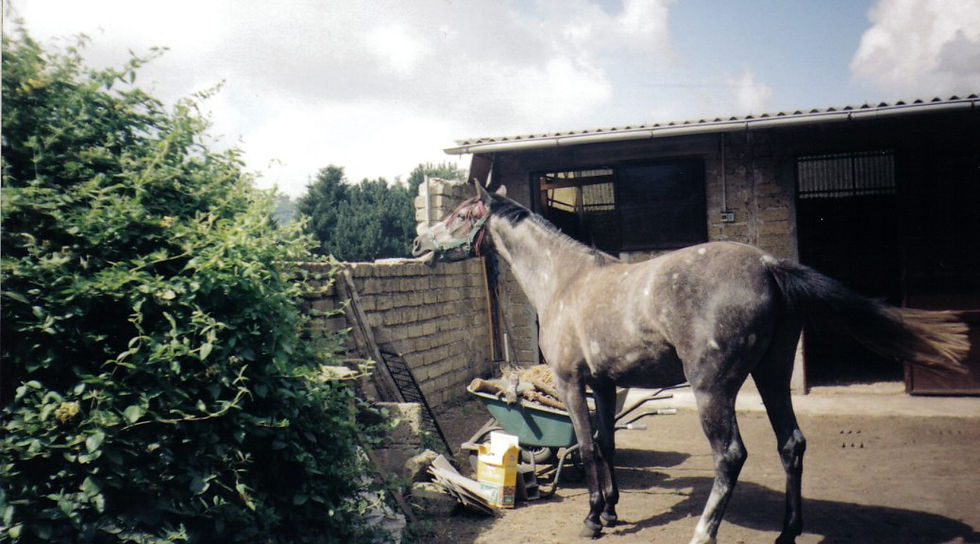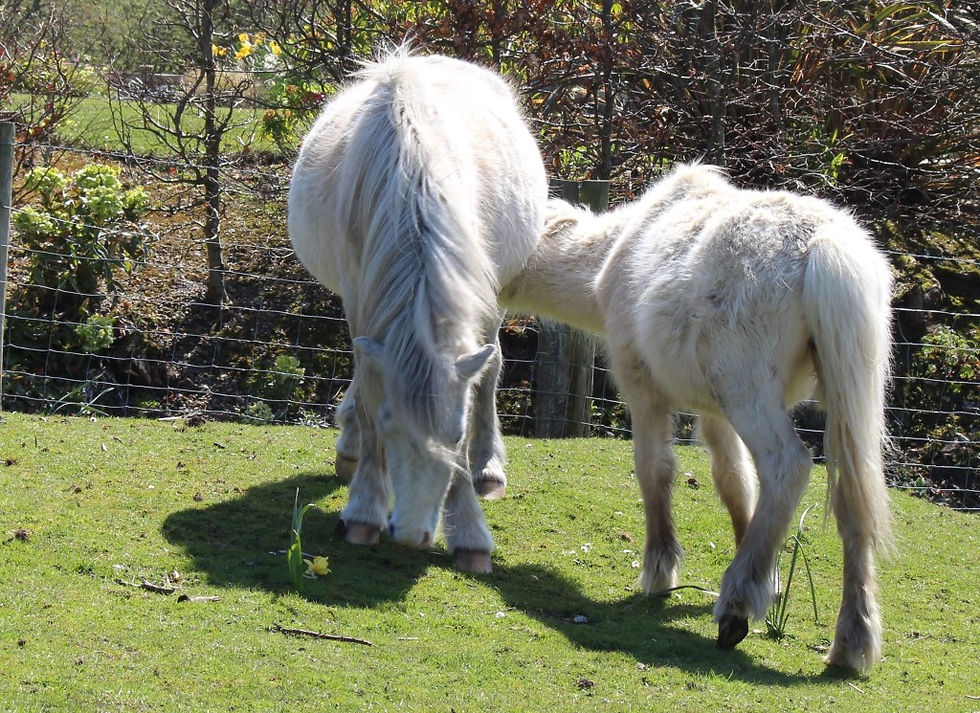Weaning... Preparing for Life Without Mum
- Oct 4, 2016
- 4 min read

Mum, Mom, Mam, Maman, Mamma, Mor… It doesn’t matter which language you speak, mothers are important. They provide comfort, sanctuary and protection, there are even books to tell us that: Jhn Bowlby describes parents as the “secure base from which to explore the world” (Bowlby, J. A Secure Base: Parent-Child Attachment and Healthy Human Development).
When I first wrote this my son Sam was 16 months old, and was exploring the possibilities of scaling the sofa. I was grateful for the spellchecker as I divided my attention between writing this article and supervising my eager toddler. Now he goes into nursery school and just about remembers to give me a kiss goodbye!

Naturally horse mothers have the same job, in the wild this is often shared with the band’s stallion and older brothers, sisters and cousins, aunts and grandmas. The mother isn’t just a food source, but that secure base for the infant horse to explore the world from. The foal feels brave enough to do this because he knows his mother and all the herd family are there for him, as his protectors and comforters. It’s perhaps no surprise that after any excitement a foal always goes to his mother to suckle. This isn’t just for nourishment but for comfort too. Nursing is associated with the effect of “appeasing pheromones” secreted from between the mares’ udders in the early weeks that both facilitate bonding, and have a calmative effect. Suckling will always be associated with these two things as a result, and will balance out life’s stresses, restoring the ability to relax.
*You can use Confidence EQ – a calming pheromone product to help the artificial weaning process be less stressful. The American equivalent, Modifier Mist has been tested.
Clearly weaning is a very significant life stage for the horse; it’s about nutritional and emotional independence! Being able to cope without Mum, the secure base. Normal biological adaptation is for foals to move entirely onto solid food anytime from 10 or 11 months, just before a little brother or sister is due. But like everything natural there is variation! Some youngsters may still nurse as yearlings and two year olds – often as a quick comforter.
Natural weaning happens in two stages. The nutritional phase comes first. Mum begins to get more impatient with her big baby and begins to walk off more often and behave aggressively, usually around a month prior to giving birth to the next foal. This is because milking and the last stages of pregnancy come at a high energy cost to her. The key thing is it’s the foal’s attempts to nurse that are rejected, not the foal. The mare will still accept her offspring’s close contact and enjoy other interactions.


The second phase is emotional independence. The foal, who is now a juvenile only becomes completely independent of mother somewhere between 18 months and 4 years when they are sexually mature and leave voluntarily in search of their own mates. The typical wild horse novel has the band stallion drive out the young, especially colts. However I’ve been watching hill ponies go through this process and it’s a more gradual thing. Youngsters go wandering, they meet other herds, they come back home again, and then they repeat their explorations. Then one day, most of them just move out for good. Just like us really! And just like us, there is sometime a filly who stays with her mum way into adulthood.

So what about when we wean our foals? It’s October now, many will be weaned already and others will be planning to. How do we accommodate each phase of weaning, nutritional and emotional independence? Without causing undue distress and future behavioural problems? There are many blogs and articles about the negative consequences of artificial weaning: gastric ulcers, separation anxiety, onset of crib biting, increased fear behaviour – get on Google and fill your boots. But I want to be positive and helpful here! So what if we just begin by asking:
Why am I weaning my foal(s)?
How soon do I actually have to do it?
What other adult horses do I have available for my foal’s emotional support?
Does my foal already know them?
Barring accidents and ill health there is usually a right time for everything.
Here’s a case study: M was a surprise foal. Her mum, R was bought in foal, but her owner was blind to this fact, so was the vendor! It happens, the same thing also happened with a friend of my aunt. When R foaled she was kept alone in her paddock, so only had M for company. A few months later, Bay arrived, recently abruptly weaned from her mother. Now M had a playmate and the threesome took a few weeks to settle together. A while later on R, M and Bay moved to the owner’s new land, and were integrated with the owner’s gelding, Big M and not long after, C a three year old filly. Now there was a herd and they got along pretty well withing weeks. M was now aged around 6 months, the traditional time for weaning. There was a pressure on her owner to wean her – lots of advice was given, not all of it asked for. We all get that from time to time! M’s owner decided to let M get a few months older, and then an experiment was tried with putting M in the next paddock to her mum, R. Post and rail fencing and mutual desire for nursing meant that they found a way to continue – which simply informed their owner that neither were ready for this step. So the two were reunited and carried on life in the herd. At a little over a year of age the owner began to realise she wasn’t seeing M nursing, that M was spending more time with the other horses, and that she could take R out to begin work, and there was little disturbance over this. So R’s work gradually increased and life went on. Nutritional weaning complete and emotional weaning well under way.





Commentaires